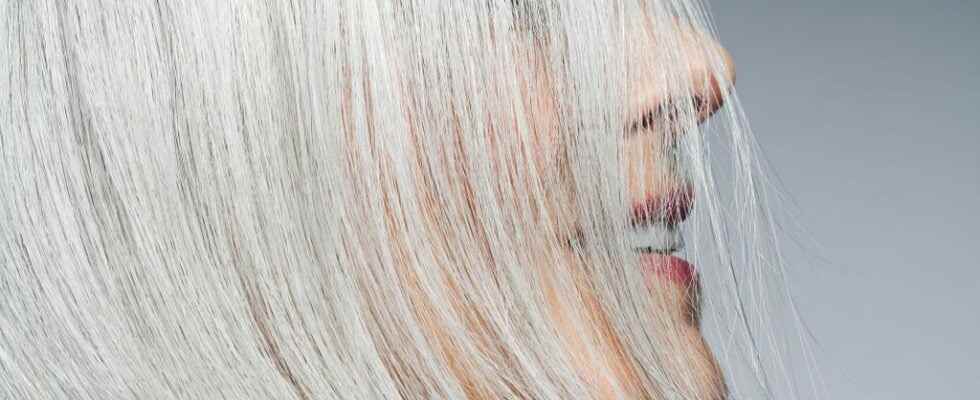Gone is the image of aging and neglected white hair! Pepper and salt had already gained its letters of nobility before confinement but since we had to learn to live without our hairdresser, it can be worn without complex … Two experts tell you how to appropriate this new color and how to take care of your gray hair.
On social networks, a new anglicism is all the rage: the #goinggrey, to understand “turn to pepper and salt”. Born in the United States, but recently introduced in France, this trend embodies the return to the naturalness of women who assume their age, by adopting a look that no longer involves the coloring of their hair, whether it is gray or white. A mini-revolution, when we know how much gray hair is still taboo in our society, where we have to “look young” as long as possible. But also undoubtedly a new right to seduction that goes beyond traditional codes … Switching to salt and pepper has another advantage : it is much less restrictive. We can in fact do without coloring, with the regular maintenance that this requires, because the hair grows back quickly.
Is it for me?
This color softens the features and brings more character, without necessarily giving an aging or neglected image. Because it’s more natural, women can be themselves, without having to “cheat” with coloring. However, the appearance of gray hair can be done in several ways. Some women have very marked white roots, with one or two strands located on the front. In others, the distribution is much more diffuse over the entire head. This is why, at the beginning, it is preferable to be advised by a professional, in order to have a harmonious result.
Whether the salt and pepper color is suitable for different styles of women, on the other hand, it is not suitable for all types of hair. If they are too curly or sparkling, it will not be suitable, because this texture reflects less light than the others. However, gray hair needs a lot of shine. Likewise, the proportion of white hair is decisive. If there is too much “pepper” and not enough “salt”, it is advisable to wait until they are a little more numerous. And therefore to continue to mask them using traditional coloring.
How is the transition going?
Deciding to let your gray hair grow and no longer hide it is not necessarily easy. Women often apprehend this transition phase. Because the hair can quickly take on an anarchic aspect, where naturally white regrowth is mixed with always colored strands.
Depending on the length of the hair, the “zebra” period can last from six months to a year. At the end of this period, we obtain a uniform whole, either pepper and salt, or all white. But there are solutions to support this transformation in a much more comfortable way.
What if we stop coloring?
# 1 We subtly veil the lengths. Every 6 to 8 weeks, the colourist can thus tailor it by working almost strand by strand to create a fade. Its objective is to unify the whole by reducing the “bar effect” as much as possible. On browns and chestnuts, it can perform a micro-sweep in dark shades (gray and bluish blacks, for example). While on blondes, on the contrary, he will rather draw light lightening mini stars on all lengths.
# 2 We regularly cut the tips. We think about it when natural strands appear. The first instinct is often to go from long to short, quite drastically. It’s not an obligation. More and more women are choosing to wear their hair long, thanks to a messy bob or soft lengths. Either way, short or long, white hair turns yellow on the tips, as it oxidizes easily in the air. They are “refreshed” every 2 to 3 months.
Once the transition period has passed, the hair gains in freedom! Coloring becomes unnecessary. This does not mean that maintenance should be neglected, quite the contrary. Find out how to take care of it in this slideshow.
Our experts:
- Delphine Courteille, hair stylist L’Oréal Professionnel
- Julie Bennadji, hair stylist Balmain Paris Hair Couture
Read also :
Loading widget
Subscribe to the Top Santé Newsletter to receive the latest news for free
